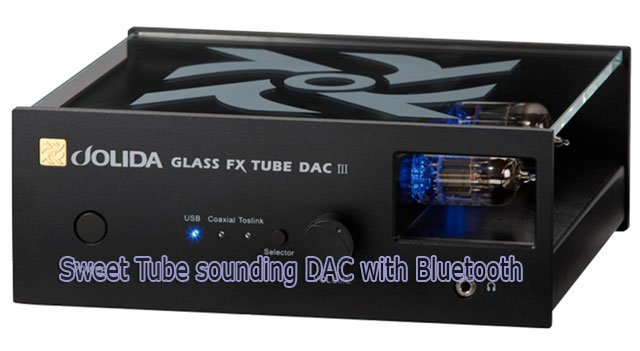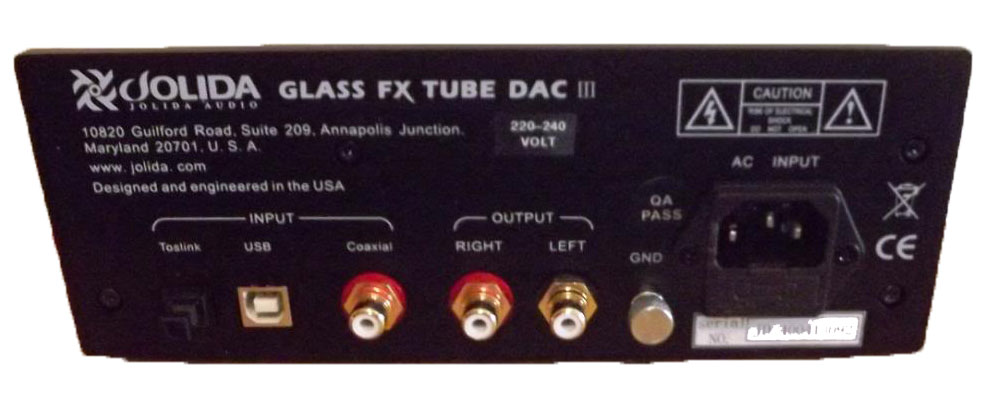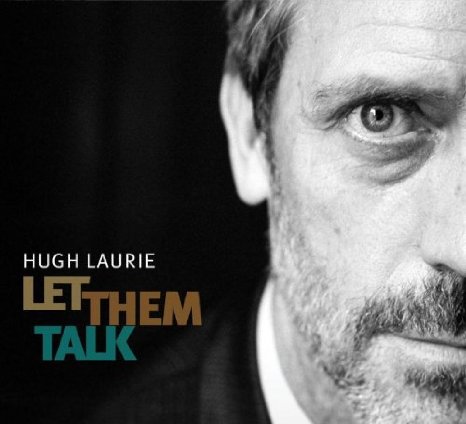Jolida Glass FX Tube DAC III W


Jolida is a Maryland-based private corporation originally incorporated in 1983. At that time, their primary business was the manufacture of vacuum tubes and other electronic parts. In 1995 Jolida began marketing their own line of vacuum tube integrated amplifiers and by 1997 the company had received many Design and Innovation awards from the Consumer Electronics Association (CEA), an OASIS award, and had products listed in Audio Review’s “Hall of Fame.”
I noticed on the Jolida DAC III Ws I received that on the rear panel are the words “Designed and Engineered in USA.” So I made a call to Jolida and asked if the actual manufacturing took place in China. What I discovered is that although the products are mostly manufactured in China, the manufacturing facilities are owned by the American-based Jolida and are subject to consistent quality control reviews by American QC personnel. When the products arrive in the US, the techs install custom proprietary parts selected to optimize performance in key areas. Likewise Jolida’s upgrades are installed in America. I know of other well-known reputable High-End audio companies that also design in America but manufacture much of the product in China. This is because it cuts manufacturing costs and allows them to sell high-performing products for considerably less than they would if all the components were made and assembled in America. This way they can produce more competitive products and pass the savings on to the consumer.
Jolida technicians test and listen to various internal components, even wiring, to optimize the performance and will even customize many of their products upon request to a particular buyer’s personal listening bias. For example, Jolida technician named Jerred told me that he can install components to provide different effects such as a wider soundstage, warmer lush sound, and even enhanced dynamics just by changing several parts. The customer can contact Jolida for more information and pricing on these custom services—which I might add are quite reasonably priced.
Jolida’s CEO Michael Allen was generous in that he sent me both a stock DAC III W with an MSRP of $599 and a factory-modified version that sells for $1250. The modifications done to the DAC include (Jolida’s numbering):” Upgrade 1”: output caps are replaced by Clarity capacitors and OCC (single crystal copper) output wire plus gold pin TungSol 12AX7 tubes are installed at a retail cost of $200. In addition, “Upgrade 3”: the installation of a Bybee Music Rail priced at $450 was installed.
The “W,” in DAC III W denotes that a wireless Bluetooth feature has been added. This option uses a separate processor chip and is effectively out of the signal path until it is switched in by a relay. This Bluetooth feature adds only $100 to the price of the basic Glass FX Tube DAC III and judging from my experience is well worth the extra cost.

 Technically Speaking
Technically Speaking
The DAC III W is a high performance digital processor using the Burr Brown PCM 24-bit 1798 DAC chip, which has galvanic isolation. It employs a 2-tube 12AX7 output stage and an R-Style internal transformer instead of the ubiquitous wall-wart. There is a volume pot on the front panel that controls volume for the rear DAC outputs as well as the front mounted 1/8” stereo headphone output. There is also a Power On/Off button and an input selector with a corresponding blue LED indicator for each digital input. For a small unit measuring only 8”W x 7”D x 3”H it feels quite heavy and substantial.
The rear panel contains the single-ended RCA-type analog stereo outputs and an IEC connector for the power cord. Digital inputs include a Toslink optical, asynchronous USB, S/PDIF RCA-type coaxial, and a Bluetooth antenna is also supplied. All the digital inputs (except Bluetooth) will upsample to 24-bit, 96kHz or 192kHz.
At the time I received the DAC III W I had no experience using Bluetooth so I had a friend bring over his smart phone and we were able to easily connect it to the Bluetooth receiver. That being said, the phone connection had a high level of background noise and the music (Elvis Costello on MP3) sounded pretty disappointing.
When I tried hooking up my laptop with higher resolution music files I discovered I needed to buy a USB adapter dongle for Bluetooth and install the included software. I did this for both my Windows XP laptop and my Windows 8 laptop. The install was a bit tricky for me but I muddled through it and got both PCs to connect to the DAC III W via the wireless Bluetooth input.
I can say that the laptop connection with the Bluetooth dongle was much lower in noise and that the sound quality was immensely better than that from the smart phone with MP3s. Playing off either laptop, using mainly CD-quality and a couple of higher resolution music files, the reproduction was quite close to that of the hardwired USB connection, which was a nice surprise.
Oops, I almost neglected to mention that Jolida put blue LEDs under the tube sockets to bathe the bottoms of the tubes in a surreal blue glow, which looks really cool. It merges well with the glass top bearing the blue Jolida logo and the blue LED indicator lights on the DAC’s front panel.
Tube Magic
Since Michael Allen was kind enough to send both a stock and a factory-modified unit I was able to compare the two with all the same associated audio components and wiring. I also swapped the gold-pin Tung Sol tubes from the modified version to the stock version so that I’d be comparing apples to apples. I had the excellent Benchmark DAC2 HGC on hand for reference, so I was ready to rock!
I began by playing the modified DAC III W on and off for a few weeks to break it in more and was surprised by its wide and deep soundstage, its musical presentation—especially on vocals, and it’s potent and fairly taut bass punch. The modified DAC III W is one fine sounding DAC, make no mistake! Tube-heads will love this unit. No, it was not quite as finely detailed as the Benchmark DAC2, but it offered a slightly smoother organic presentation without giving up much detail to do so. That said, the Benchmark DAC2 does provide more nuances and greater clarity for improved lyric comprehension and it has deeper, more articulate bass. Plus, being a very good solid-state DAC, the Benchmark DAC2 is also a bit quieter.
One feature where I thought the Benchmark DAC2 noticeably outshined the DAC III W (both the modified and stock versions) was in its headphone reproduction. With headphones the DAC2 not only sounded more powerful and controlled, but I swear I could hear every syllable of every lyric on every song I played. The DAC III W’s headphone output was certainly very musical and fairly detailed but not quite as close to state-of-the-art as that of the Benchmark DAC2. Still, with speakers, the DAC III W comes into its own and I can see some audiophiles (especially the tube lovers among us) preferring the tonally rich presentation of the modified DAC III W to the more articulate and finely detailed, but perhaps less euphonic Benchmark DAC2.
Then one day, I took the modified Jolida DAC out of the system and installed the stock version of the DAC III W remembering to swap in the gold-pin Tung Sol tubes for a fair comparison. I let the stock unit burn in for a couple of days and then…
“Hmmm,” I thought to myself on first listen, “this stock Jolida sounds really good!” Both male and female vocals were clear and natural and the focus of the instruments was excellent. The bass was at the same robust level as with the modified Jolida and the highs seemed, if anything, even a bit more extended. In that moment, I had to do a reality check and wonder which unit was the “upgraded” version. But since I knew the black DAC III W was the modified unit and the silver one was the stock DAC, I knew a showdown was on the horizon. For the moment I was having too much fun checking out the stock Jolida.
The next day my curiosity got the best of me so I began my listening with the stock DAC III W (since I’d left it hooked up). Later on, I swapped the upgraded Jolida back in the system. While the presentations of the two DACs had many similarities, there were some differences.
On the Jersey Boys Soundtrack CD (Rhino R2 7327), listening to “Dawn,” it seemed the backing vocals were presented a bit more clear, distinct, and engaging on the modified DAC III W. And on “December 1963” instrumental edges were a bit better defined.
But on the Squirrel Nut Zippers’ Hot (Mammoth 354 980 137-2) the leading female vocal was rendered quite well by both DAC versions and on some recordings I thought the stock DAC III W was a bit more extended in the high frequencies.
 Then on Hugh Laurie’s “Battle of Jericho” from his Let Them Talk CD (Warner Bros. R2 527497) the modified DAC III W sounded a bit more full-bodied. Laurie’s vocal was textured and natural and the drums and bass felt a little more “there.” Brass horns came across as being more fleshed out and authentic on this CD as well.
Then on Hugh Laurie’s “Battle of Jericho” from his Let Them Talk CD (Warner Bros. R2 527497) the modified DAC III W sounded a bit more full-bodied. Laurie’s vocal was textured and natural and the drums and bass felt a little more “there.” Brass horns came across as being more fleshed out and authentic on this CD as well.
To my ears, the upgraded DAC III W got my vote for being a bit more musical, tonally rich, and 3-dimensional, while the stock unit was quite well focused and extended in the highs. This made it sound a little more analytical and perhaps a smidgeon less tonally rich. That being said, I am splitting hairs here and doing simple things like tube rolling and/or cable swapping could further narrow the performance gap between the two DACs. And to be fair I was feeding both DACs clean AC power via my Monarchy Audio AC regenerator so the Bybee mod on the modified unit may not have been doing as much good as it could have if the DACs were simply plugged into the wall and receiving dirty AC power.
Bottom line: with the twice-the-price modified DAC III W you will be getting perhaps another 10 to 15 percent of the kind of tonally rich sound that tubeoholics obsess over. Also, using a good AC power regenerator like I did may reduce the contribution of the Bybee Music Rail, so if you already own a good AC power regenerator or a high quality power conditioner you may be able to shave $450 off the modifcation price by only getting the Clarity cap, OCC wire and Tungsol gold-pin tube upgrade “Upgrade 1,” and not “Upgrade 3,” the Bybee mod.
Then again, if you’re running the DAC plugged directly into a wall outlet or via a relatively inexpensive power strip the inclusion of the Bybee mod may be well worth the extra investment. I read on Jolida’s website that the Bybee mod is supposed to lower the noise floor by 45dB. I thought it was a misprint so I called Jolida to check into it. I was told that realistically there may be a 25 to 30dB improvement in noise reduction. To me even that seems like a huge number; in my system to my ears the audible reduction in background noise was there, but it was more subtle than huge.
Conclusion
I very much enjoyed my time evaluating both the stock and upgraded versions of the Jolida Glass FX Tube DAC III W. These are wonderful sounding, well-built and affordable tube DACs that can use either Bluetooth streaming from a laptop or other Bluetooth device, or one of the three hardwired digital connections. Plus they have included a built-in analog volume control and a sweet sounding tube headphone output in the bargain.
While I found that the stock DAC III W is an excellent performer in its own right, the upgraded DAC III W sounds a bit more dimensional and tonally rich. It also made the already quiet background level even quieter. I can’t think of a DAC in the same price range as these Jolida DACs that will provide the same level of musical performance and enjoyment.
Jolida is to be commended for the quality work they put into the design and execution of these fine digital processors. With their custom upgrades they go that extra mile to ensure musical satisfaction for their customers. And that’s what it’s all about. Highly recommended!


frank alles
Description
Jolida Glass FX Tube DAC III W
Dimensions: 8”W x 7”D x 3”H
Net Weight: 7.5 lbs.
Price: $599 USD; with Upgrade 1 and Upgrade 3: $1,250.
Please visit: http://www.jolida.com/product/glass-fx-tube-dac-iii-w for more information on specs and features.
Manufacturer
Jolida
21310 Ridgecroft Drive
Brookeville, MD 20833
Phone: 1 310-953-2014
Web: www.jolida.com
E-mail: info@jolida.com
Stereo Times Masthead
Publisher/Founder
Clement Perry
Editor
Dave Thomas
Senior Editors
Frank Alles, Mike Girardi, Russell Lichter, Terry London, Moreno Mitchell, Paul Szabady, Bill Wells, Mike Wright, and Stephen Yan,
Current Contributors
David Abramson, Tim Barrall, Dave Allison, Ron Cook, Lewis Dardick, John Hoffman, Dan Secula, Don Shaulis, Greg Simmons, Eric Teh, Greg Voth, Richard Willie, Ed Van Winkle, Rob Dockery, Richard Doron, and Daveed Turek
Site Management Clement Perry
Ad Designer: Martin Perry






Be the first to comment on: Jolida Glass FX Tube DAC III W